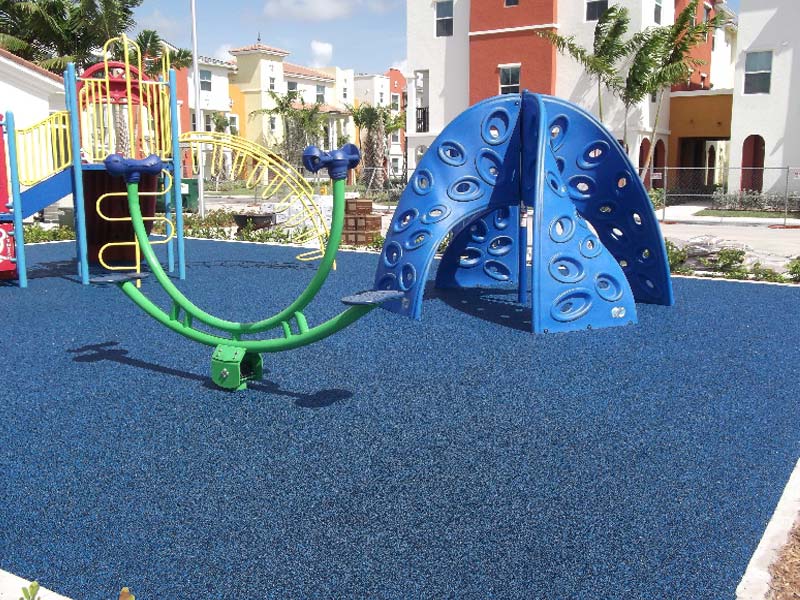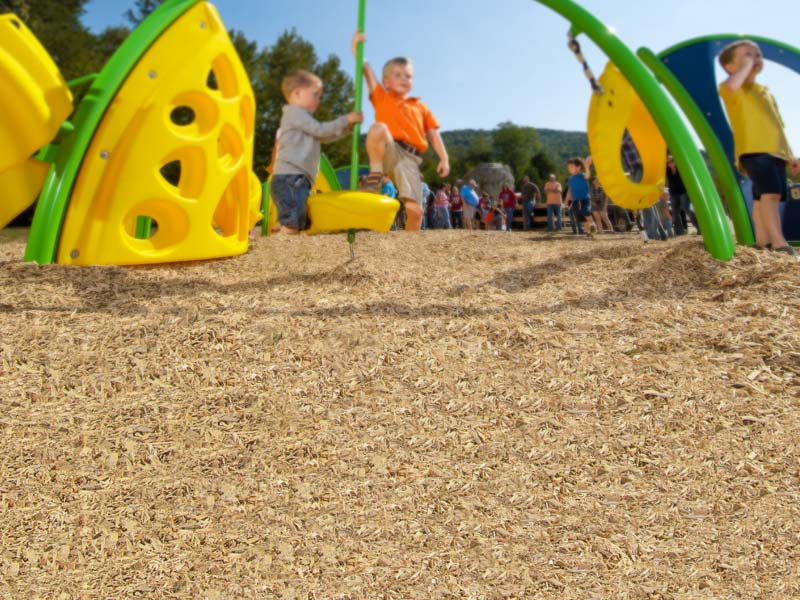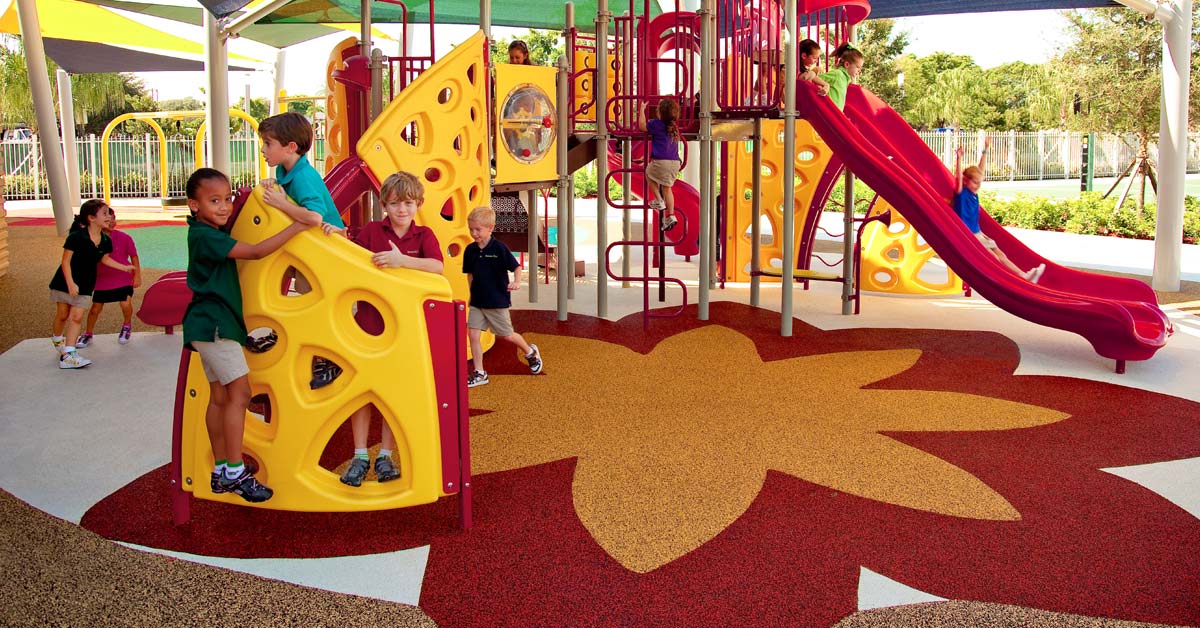Laying the right safety surfacing at your playground area can be a lot harder than you think. You can’t just put down a couple bags of sand or mulch and say your playground is safe.
First, research surface materials and find out what the requirements are for surfacing your play space. Then you can provide proper safety surfacing throughout your playground. Lucky for you, you can find all of that information right here on our blog.
Safety Surfacing Options
Let’s start with your options. According to the CPSC Handbook for Public Playground Safety, there are two types of safety surfacing: unitary and loose-fill. The right surfacing for your playground will depend on many factors such as:
- How much you would like to spend on safety surfacing. (This includes upfront cost as well as cost of maintenance.)
- Playground use frequency and by how many children.
- Site conditions like drainage and climate.
- You know your total playground budget.
- You’re interested in a long-term warranty.
Safety surfacing must be IPEMA tested AND approved in order to be compliant for playground use. Your surfacing should also allow your playground to be accessible to those with disabilities in accordance with ADA standards.
Unitary Surfacing

Unitary Safety Surfacing is durable, long lasting, and more flexible than traditional surfacing. Unlike loose fill, there is no displacement so daily or weekly maintenance is minimal.
To start, unitary surfacing materials are held in place by a binder that may be installed at the playground site, such as rubber mats, tiles and Poured-in-Place (PIP) material. Unitary surfaces are cured after installment to form a shock-absorbing surface. Curing after installment is strongly recommended to avoid discoloration and roughness.
The most common and versatile type of unitary surfacing is PIP. This is installed over asphalt, concrete, or crush stone, making it great for spare parking lot space. It’s also the most customizable option and does not require any borders.
On the other hand, rubber tiles offer a lower maintenance option for unitary surfacing and are especially great for facilities with indoor playgrounds. Also, maintenance is very simple and low cost with Rubber Tiles. Repairs are simple as you need only remove and replace the damaged tile.
Loose-Fill Surfacing

Loose-fill safety surfacing is a cost-effective safety surfacing for any facility that is looking for a high rated, affordable option. Additionally, it’s the most common playground surfacing used in the United States. These materials are loose bark, shredded, or chipped, and typically made of engineered wood fiber or recycled tires. This mulch is not like the mulch you toss in your garden though.
Playground mulch is specifically for outdoor play areas. Unlike garden mulch, playground mulch is compacts together, eliminating splinters and maximizing shock absorbency. Other loose-fill materials are sand, pea gravel and rubber mulch. Out of all surfacing options, Rubber Mulch provides one of the best impact attenuation ratings through IPEMA.
Loose-fill materials compress about 25 percent over time due to use and weathering, so it is important to consider this when filling your surface. For example. if it’s required to have nine inches of fill, then your initial fill should be 12 inches. This will account for the weathering and compaction over time. Therefor, although loose-fill surfacing is cheaper up front, it can cost more money over time.
Activity displaces the fiber and requires regular raking to be turned back into place. This is especially true in heavy use areas such as below swings and at the base of slides.
According to PlaygroundSafety.org, “equipment height influences the ability of a surface to provide protection in the event of a child’s fall. Research has shown equipment more than 5 feet high more than doubles the probability of injury. “
Safety Surfacing Shock Absorbency
Of course, both of these safety surfacing options have one important factors in common: shock absorbency. On a playground, shock absorbency may be the most important safety factor.
It’s inevitable that children fall, trip, and stumble on the playground. The more shock absorbency a surface has, the more cushion there is for fallen children. This helps lessen the impact of falls, preventing serious injuries and in some cases death.
Finally, all safety surfacing must have a three to six inch base ground made out of gravel and must comply to the ATSM F1292 standards. Having a base ground allows for proper drainage and helps your desired surface perform better.
Learn More About Safety Surfacing
For more information about surfacing or the importance of shock absorbency on the playground, please feel free you give us a call at
Additionally, we recommend you review pages 8-11 of the CPSC Handbook for Public Playground Safety to learn more about safety surfacing.
